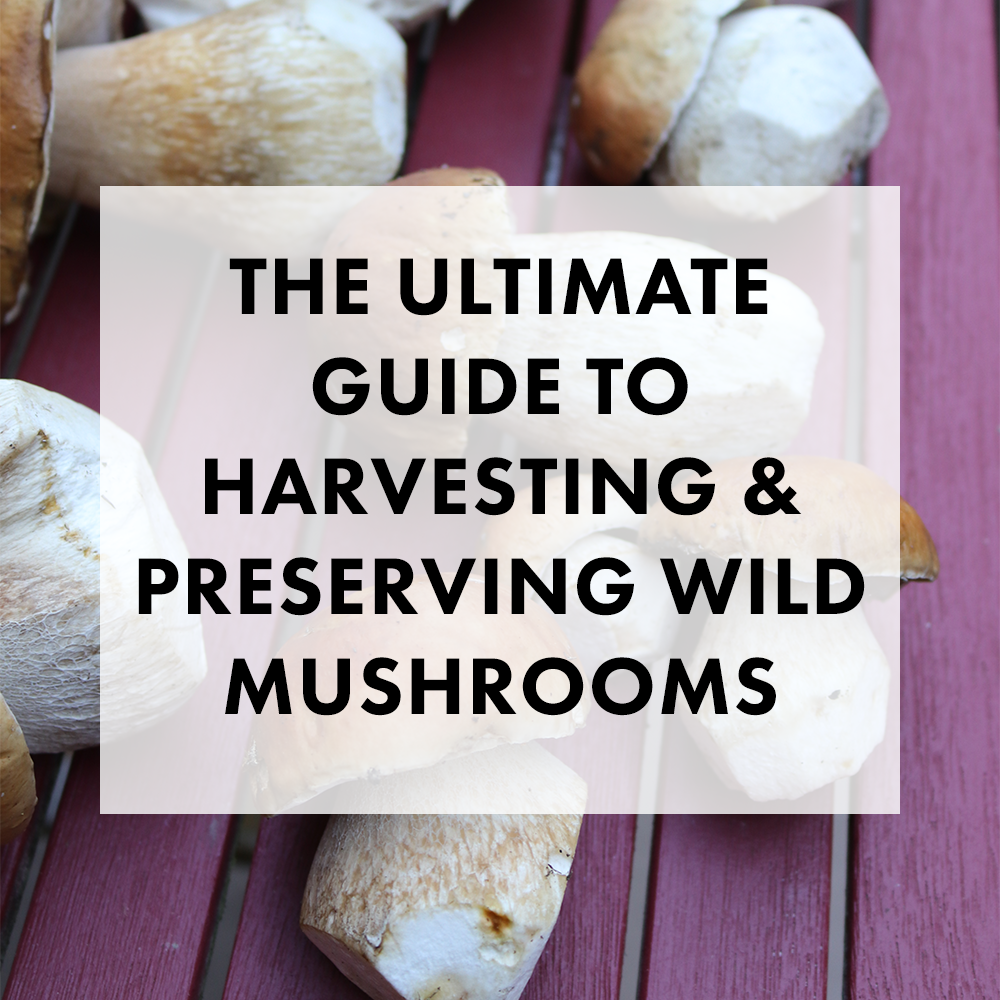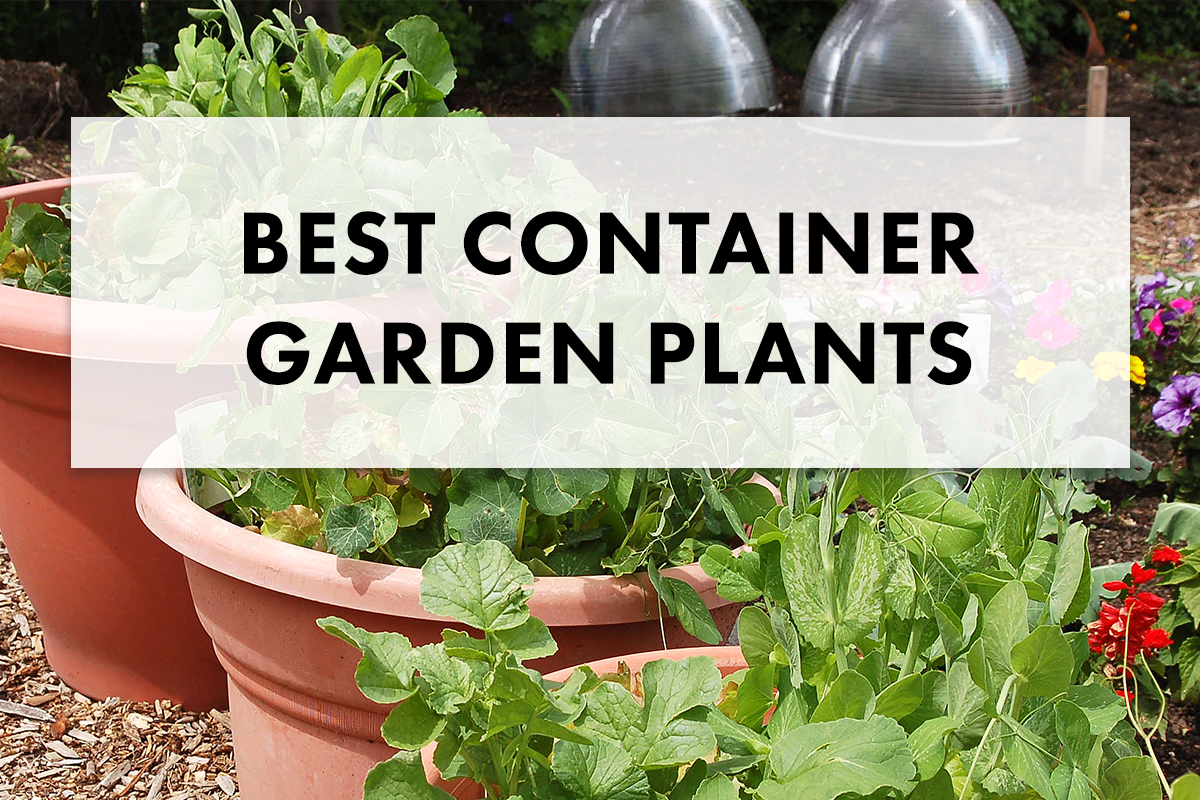The Ultimate Guide to Harvesting and Preserving Wild Mushrooms

Wild mushrooms are a seasonal product, which means they arrive during a short window of time and, occasionally, in a bountiful manner. If you find one beautiful porcini, you are probably going to immediately sauté and eat it with a glorious sense of fulfillment and smug pride (at least that’s how I feel!). If you find a large field of porcini, you are going to want to preserve the harvest (and that blissful feeling) for as long as possible.
In the Field

Mushrooms are perishable and begin to deteriorate the moment you pick them. The more delicate the mushroom, the faster its deterioration. Your first considerations should be sustainability and conservation. Ask yourself two questions:
Do you really need to pick that mushroom?
How can you ensure there will be mushrooms in this location in the future?
Mushrooms are the fruit of a much bigger organism, and their main job is to produce spores to help the plant reproduce itself. I usually forage for mushrooms that are relatively plentiful (like the ones described in The Deerholme Mushroom Cookbook). If you find a large patch of mushrooms, resist the urge to pick every specimen. For one thing, there will usually be a wide range of quality in the mushrooms. Young buttons will not have had time to develop a depth of flavour. Older mushrooms will be starting to decay and may be riddled with worm larvae. I tend to high-grade mushrooms in the field and take only the best, making sure to leave some behind.
If you include wormy mushrooms in your harvest, beware, as the larvae will migrate to other mushrooms during transport and storage. This is particularly important to keep in mind with porcini and pine mushrooms.
There is much debate over the correct way to harvest mushrooms. In a mossy forest floor habitat, it is best to gently push the mushroom at the base of the stalk and pull it up from the forest floor. At that point, you can trim any dirt from the base and clean off as much debris as possible. Never allow dirt to enter your collecting basket or bag. You can use baskets or cloth or even recycled plastic bags while harvesting, as long as you immediately place the mushrooms in a packing basket (a mesh-sided container or wicker basket will do nicely) when you return to your vehicle. If you store mushrooms in a plastic bag, they will sweat moisture and the decaying process will be accelerated.
Other mushrooms (such as the oyster mushroom and the cauliflower fungus) occur on the trunks and stumps of trees and must be cut off with a knife as you harvest them. Oyster mushrooms are fragile, so use a basket for collecting these specimens. A bag would jostle and crush the delicate flesh.
Keep mushroom types separate. However, don’t worry too much about the similar cousins like hedgehogs, chanterelles, etc. These varieties you can sort out back home. If there are fragile mushrooms, you can place them in a paper bag to keep them apart in your collecting basket. If you are unsure about the identity of a mushroom, it is a good idea to keep it separated until it can be identified with certainty (i.e., using a guide book or another expert opinion).
Sorting and Airing
Back home, lay newspapers on a table and spread out your collection. Go through the mushrooms to confirm your identifications, discarding any that you are unsure of. You also have a second opportunity to clean the mushrooms, trimming off any brown edges. Check for worms (and worm trails) and discard any specimens that show signs of worms. If the mushrooms are very wet (like chanterelles tend to be) you can leave them out for several hours. Moisture will evaporate and be absorbed by the newspapers.

Choose a storage container with plenty of side ventilation and line it with paper towels or newspaper. Place cleaned mushrooms inside and top with more paper. You now need to judge the moisture content of the mushrooms. If they appear dry, sprinkle a little water on top of the paper to keep the mushrooms hydrated. If the mushrooms appear wet, don’t add any additional water. Place the cleaned mushrooms in a fridge for storage. If you have a bumper crop, process the mushrooms further, using one of the following techniques.
Drying
Drying mushrooms is the most practical way of preserving your harvest. Almost any mushroom can be dried and reconstituted with good results, but some mushrooms are better than others. Porcini and morels are the best dried mushrooms. Their flavour is concentrated and enhanced by the drying process. Chanterelles are less appealing dried. The drying process removes some of the more aromatic notes from that mushroom and makes the final product very tough and fibrous. Pine mushrooms also lose many of the aromatic qualities that make them so highly valued as a fresh mushroom.

Cultivated mushrooms are excellent dried—shiitake, button, and oyster mushrooms in particular. In addition, the medicinal properties of mushrooms will survive the drying process and will be just as potent as in the fresh ones. One of my key techniques for mushroom cooking is to further process dried mushrooms into a powder, which allows you to infuse mushroom flavour into a vast and almost infinite combination of foods.
For home drying, I use a purpose-built dehydrator (mine is an Excalibur brand). It is essentially a small box (the size of a large microwave) with racks, a small heat source, and a fan to allow an even flow of air. Fill the dehydrator with sliced mushrooms in the evening and they will be dry the following morning. Dry until the mushrooms are fairly brittle, but with a slight bend. As the mushrooms cool, they will crisp up and harden. You can also place the mushrooms on a cooling rack and place in a warm oven set to the lowest temperature. You can even set up a drying rack over a water heater or near a wood stove with good results. It will usually take 12 to 18 hours to dry the mushrooms using these makeshift methods.
Freezing
Freezing is an excellent way to preserve many types of mushroom. My freezer is typically loaded up with firm porcini mushrooms, small pine mushrooms, chanterelles, and even morels. Simply place cleaned and dried mushrooms in plastic bags and freeze. Zip-lock freezer bags work well, but for an extended shelf life, vacuum pack the mushrooms (there are many home devices, like FoodSaver or VacMaster, available for this purpose).
Many mushrooms can be frozen whole, or cooked in fat (butter, olive oil, duck fat, etc.) and then frozen. The fat helps preserve some of the more volatile elements of the flavour. You can also make sauces (tomato is my “go to” sauce), soups, or chowders in bulk and freeze them for several months with excellent results.
Pickling
Pickling is the third prime tool for preserving your fungi harvest. There are important rules to follow when canning foods since the process can create an anaerobic environment, which essentially means “without the presence of large amounts of oxygen.” Consequently canned foods provide a prime environment for nasty spores like botulism to flourish. The anaerobic process is not all bad, though. It’s also responsible for fermentation, which gives us wonderful products like dill pickles and kimchi. These products usually rely on salt (sometimes with the help of chilies) to moderate the levels of harmful bacteria. Unfortunately there have been welldocumented cases of mass poisoning from home-canned mushrooms (particularly ones canned in oil and with garlic, a natural carrier of botulism spores). Improper canning can result in serious illness and even death in extreme cases.
Pickling with salt, vinegar, and sugar, however, is a relatively safe method of preservation. That said, it is still a complicated process, so please consult a good modern canning resource like bernardin. ca or freshpreserving.com for more details. The pickle recipes I use are meant to be stored in the fridge and consumed quickly, which eliminates many of the issues with canning.
Infusions
An infusion is the steeping of a substance in liquid to extract culinary or therapeutic properties. This technique has been used since the dawn of civilization with soups, teas, and elixirs. You can use water, alcohol, oil, or fat (butter, duck fat, etc.) to extract many flavour and medicinal components. When you reconstitute dried mushrooms in water, you are making an infusion from that mushroom. This water can be added to stock to magnify its flavour, nutrients, and health benefits.
Alcohol
A current hot trend called mixology has bartenders making mushroom infusions with alcohol to create wildly flavoured cocktails. This is not a new trend: the Japanese have been infusing sake with pine mushrooms for many years. The process is fairly simple and I have included a few recipes in The Deerholme Mushroom Cookbook to make you a myco-mixologist. Alcohol is also used to preserve truffles (usually brandy, cognac, or port) and can be purchased commercially. It helps to preserve the flavour of the truffle blended with the flavour of the spirit used. The texture of the truffle is rubbery but the flavour can be quite excellent.
Excerpted from The Deerholme Mushroom Cookbook by Bill Jones, copyright © 2013, 2024 by Bill Jones.






